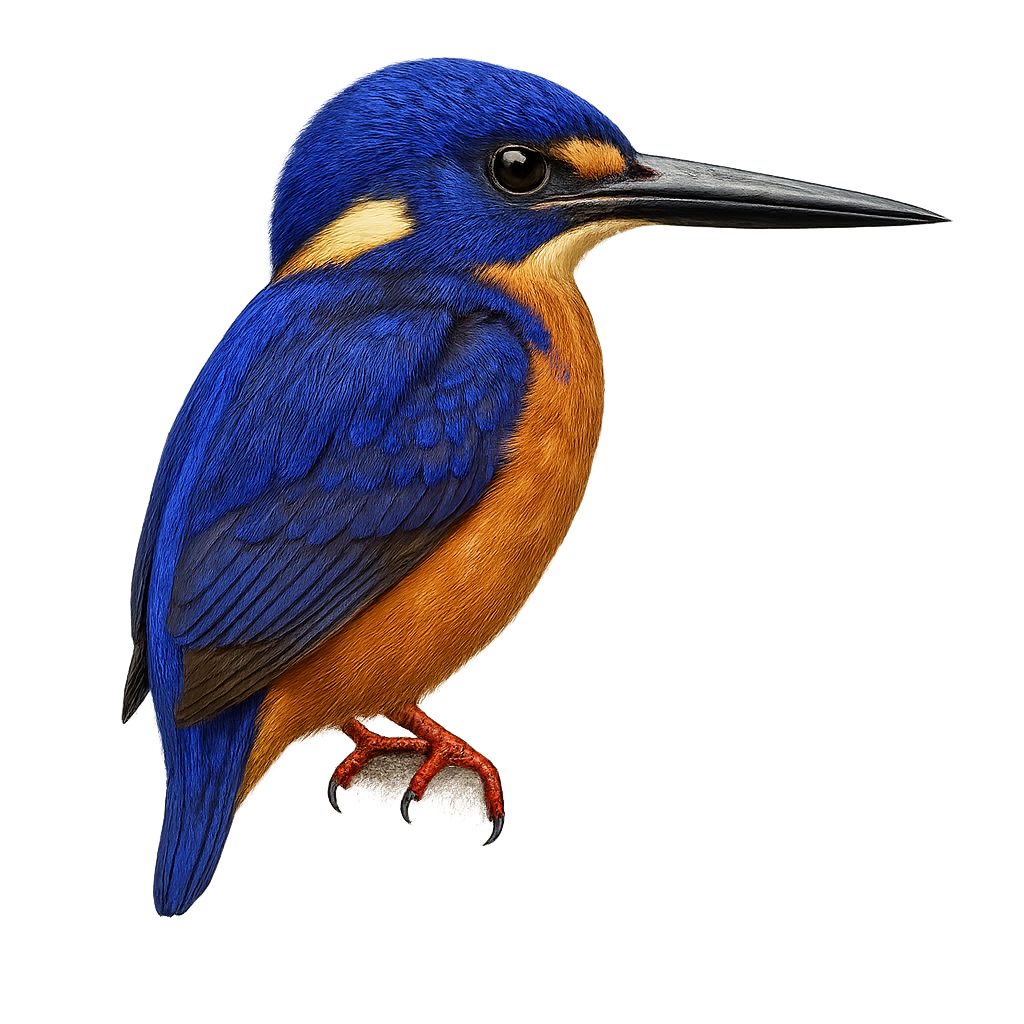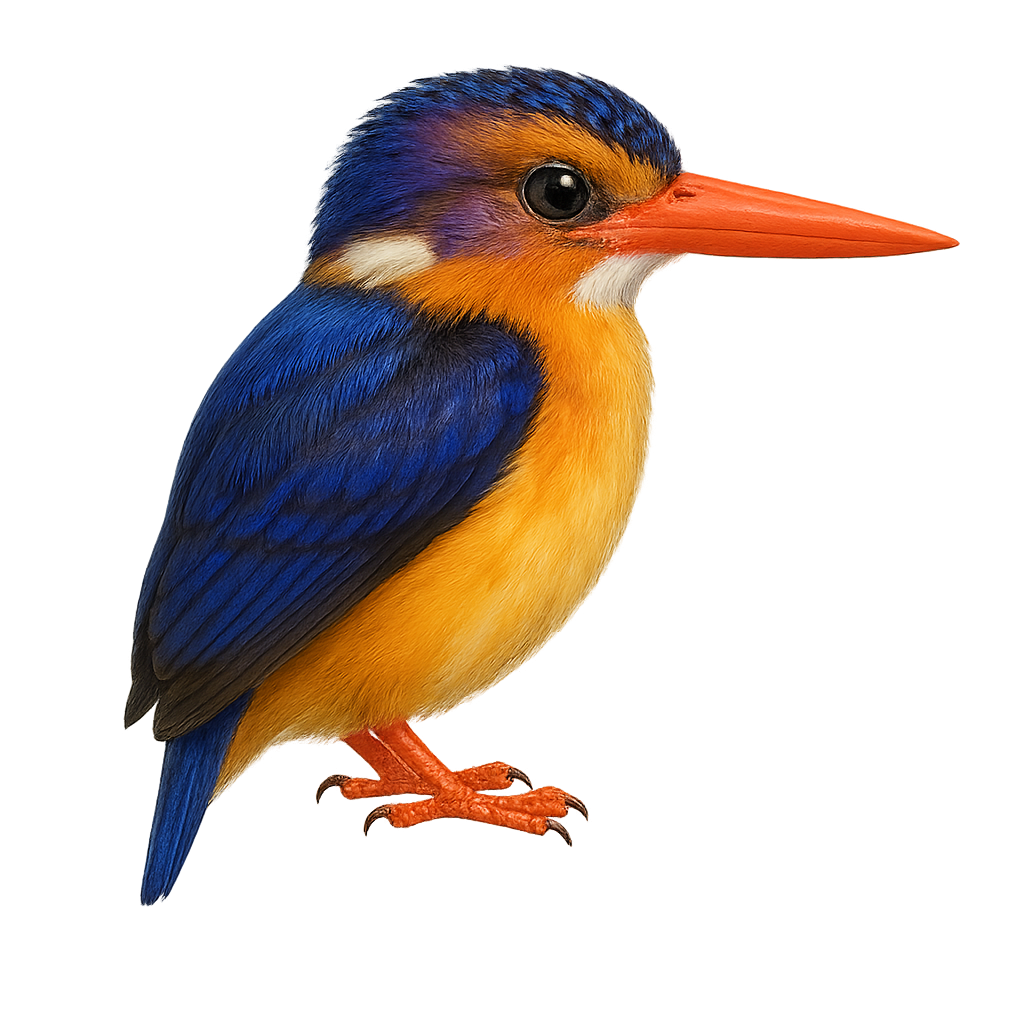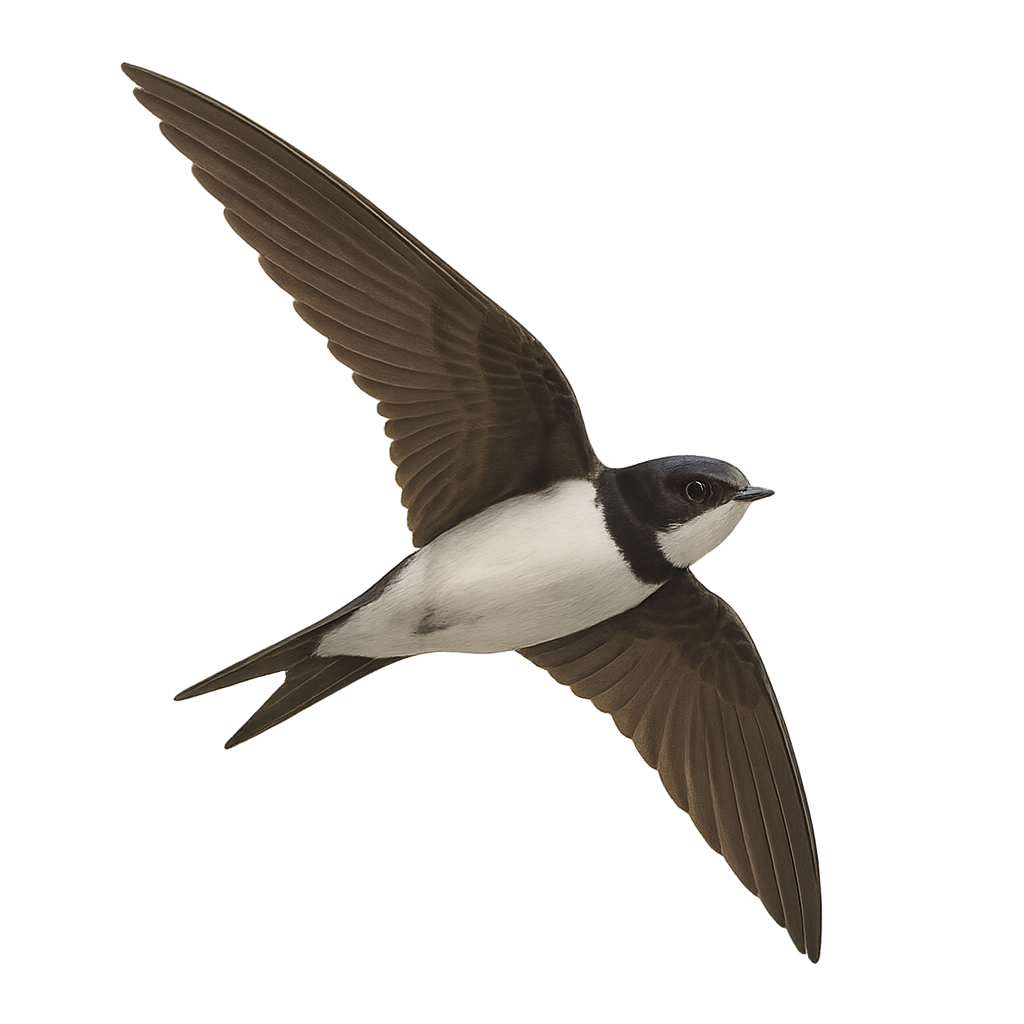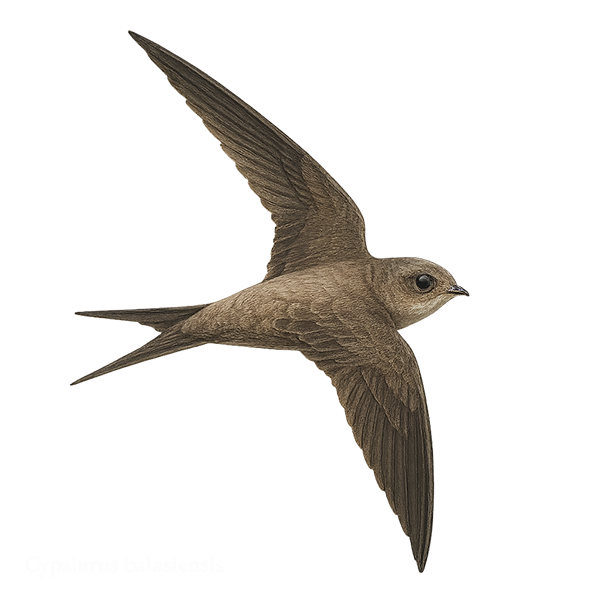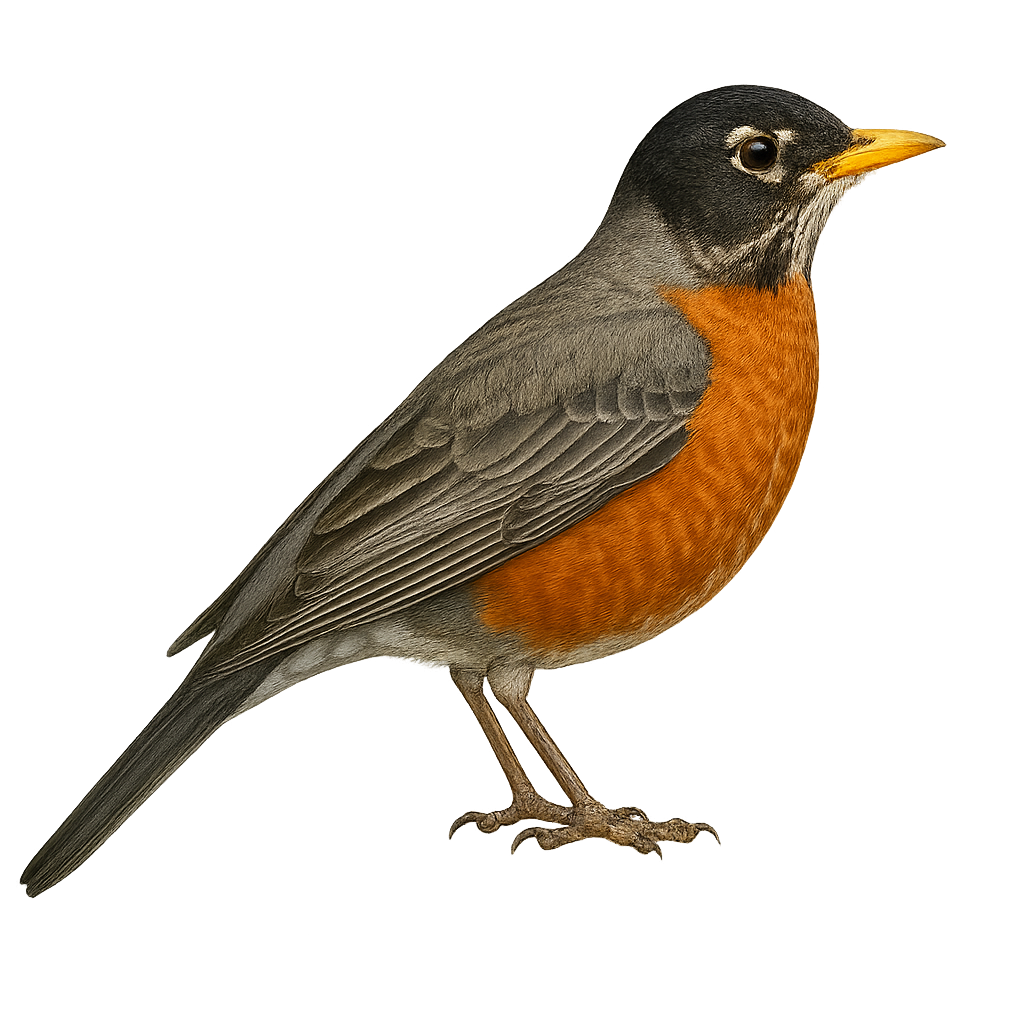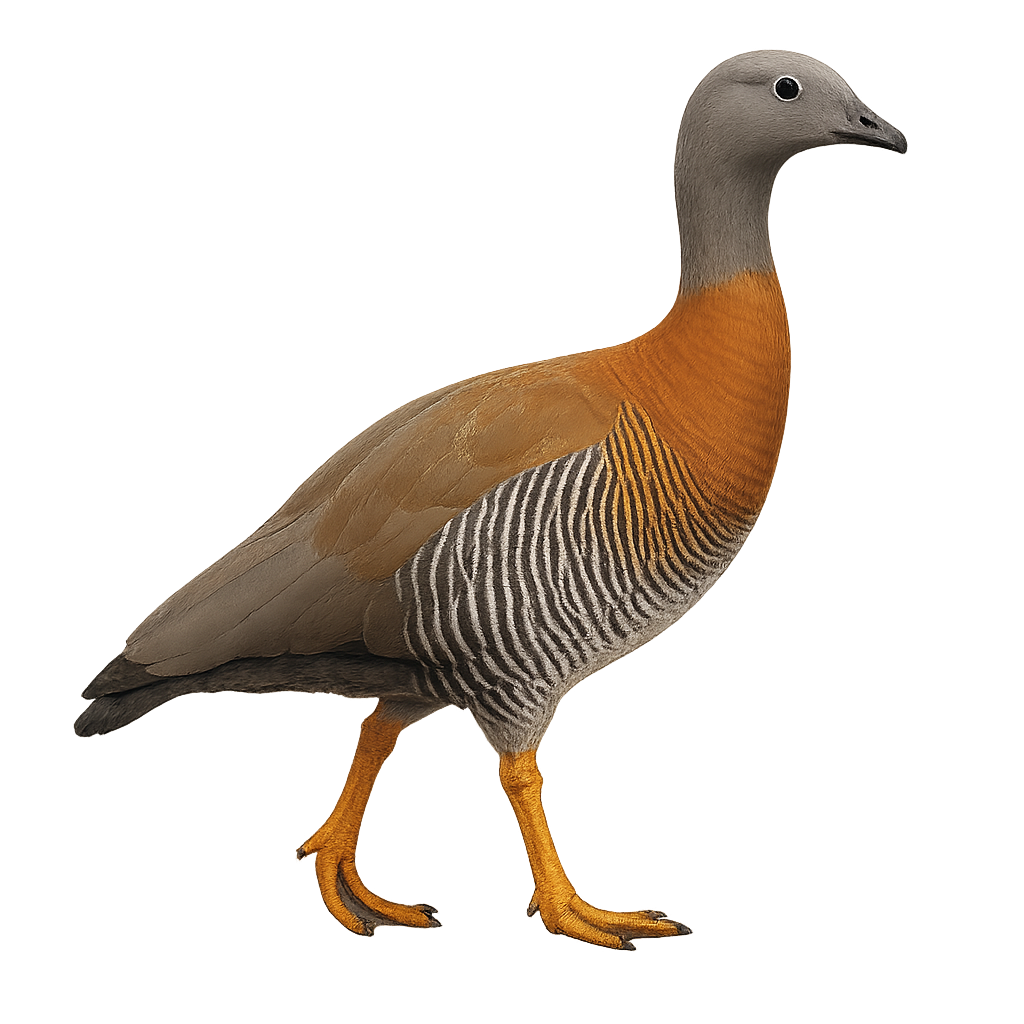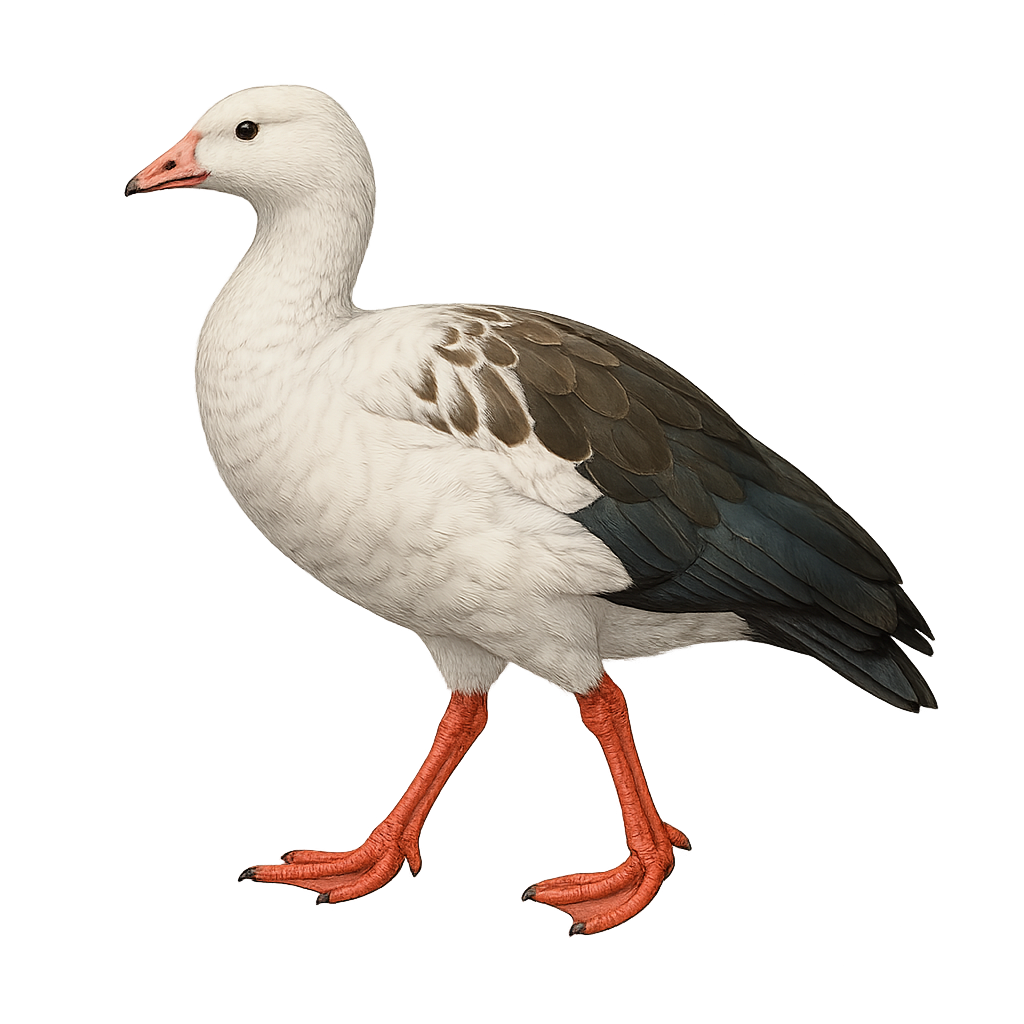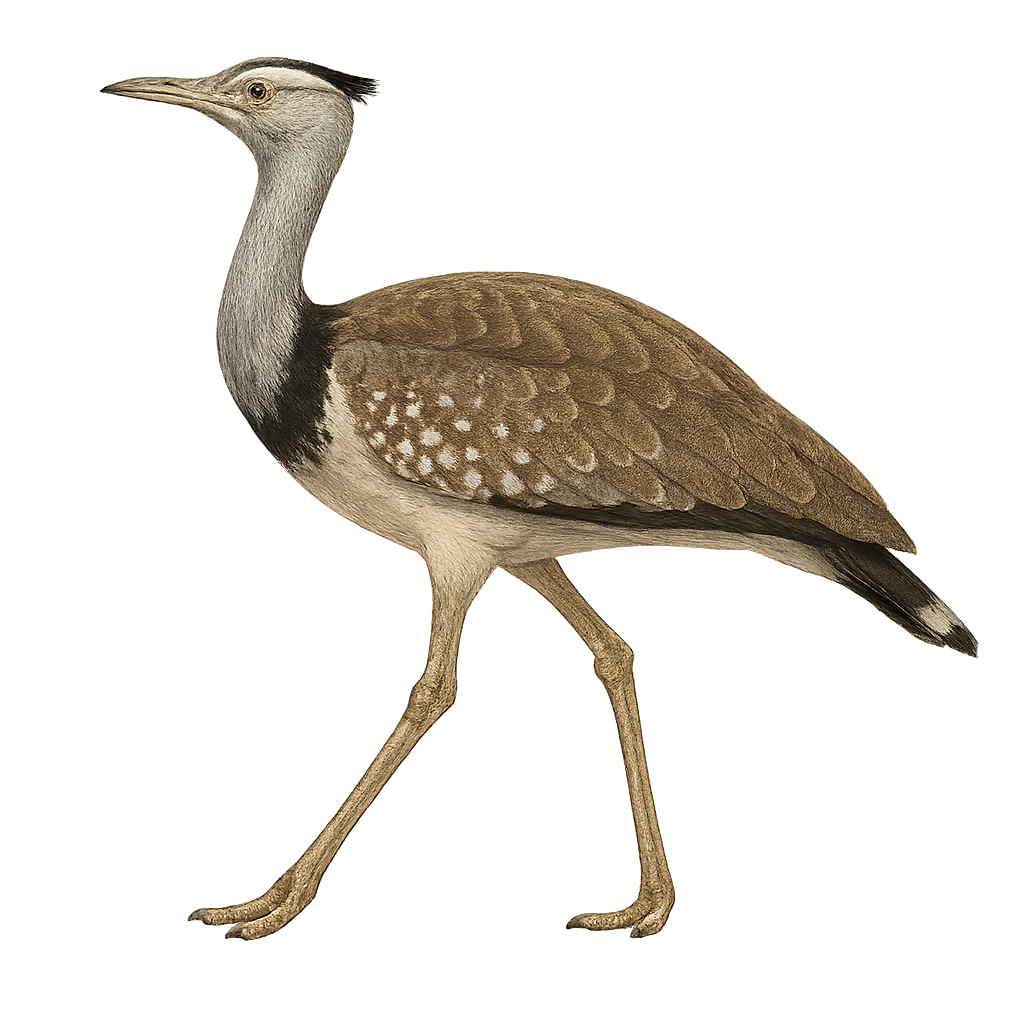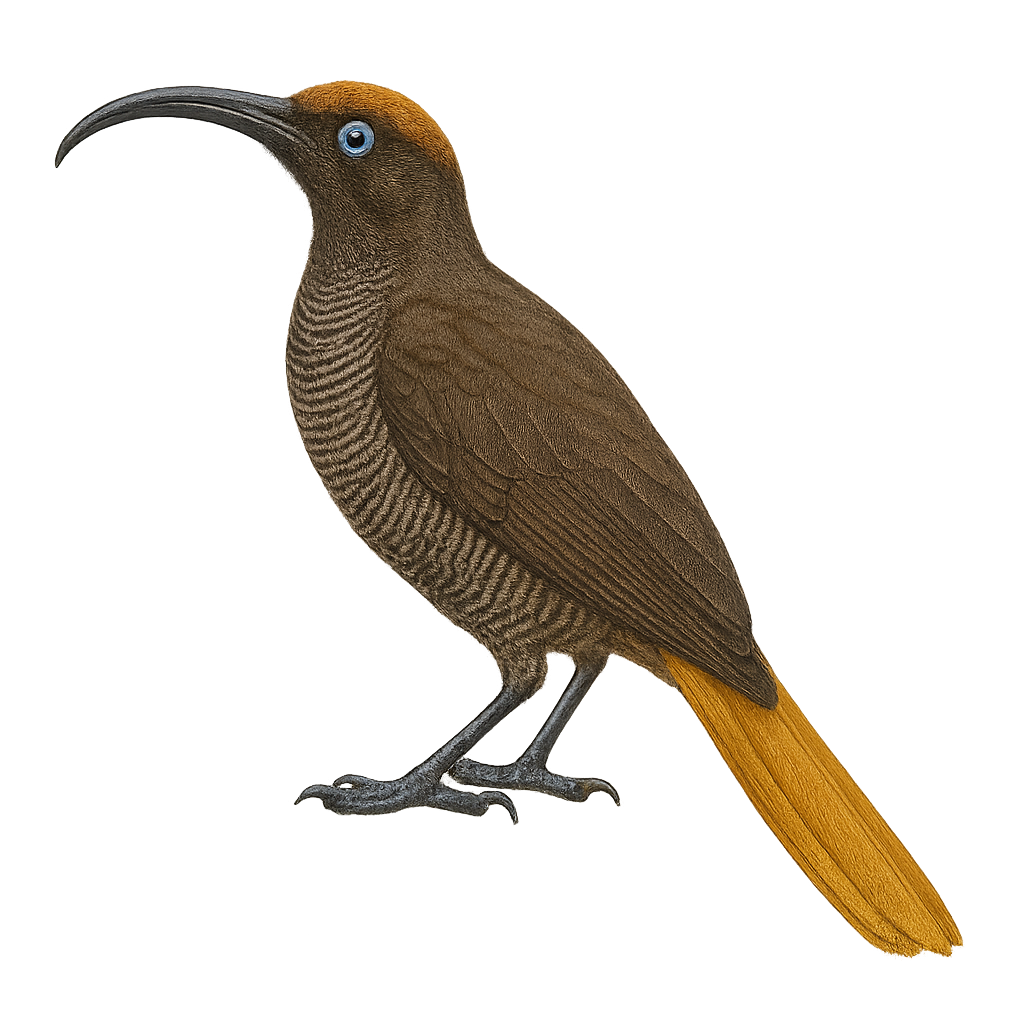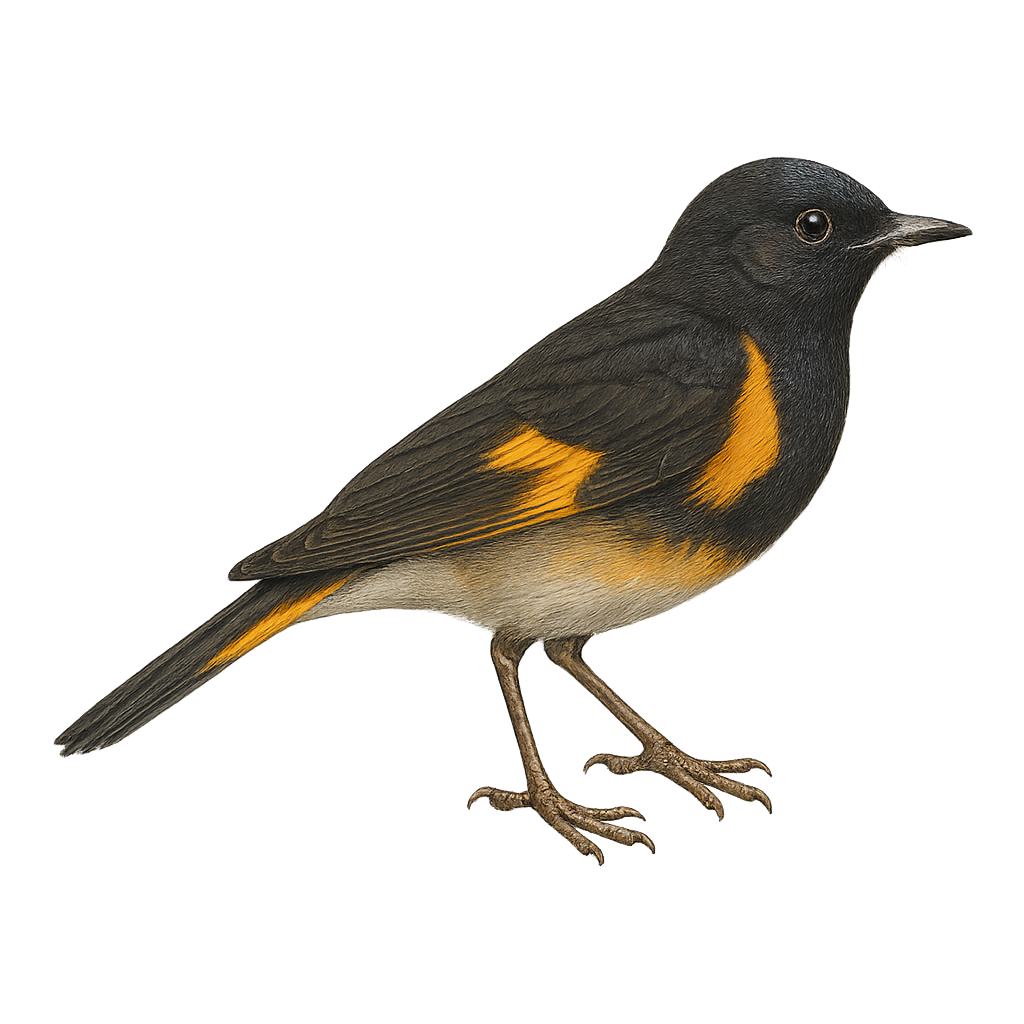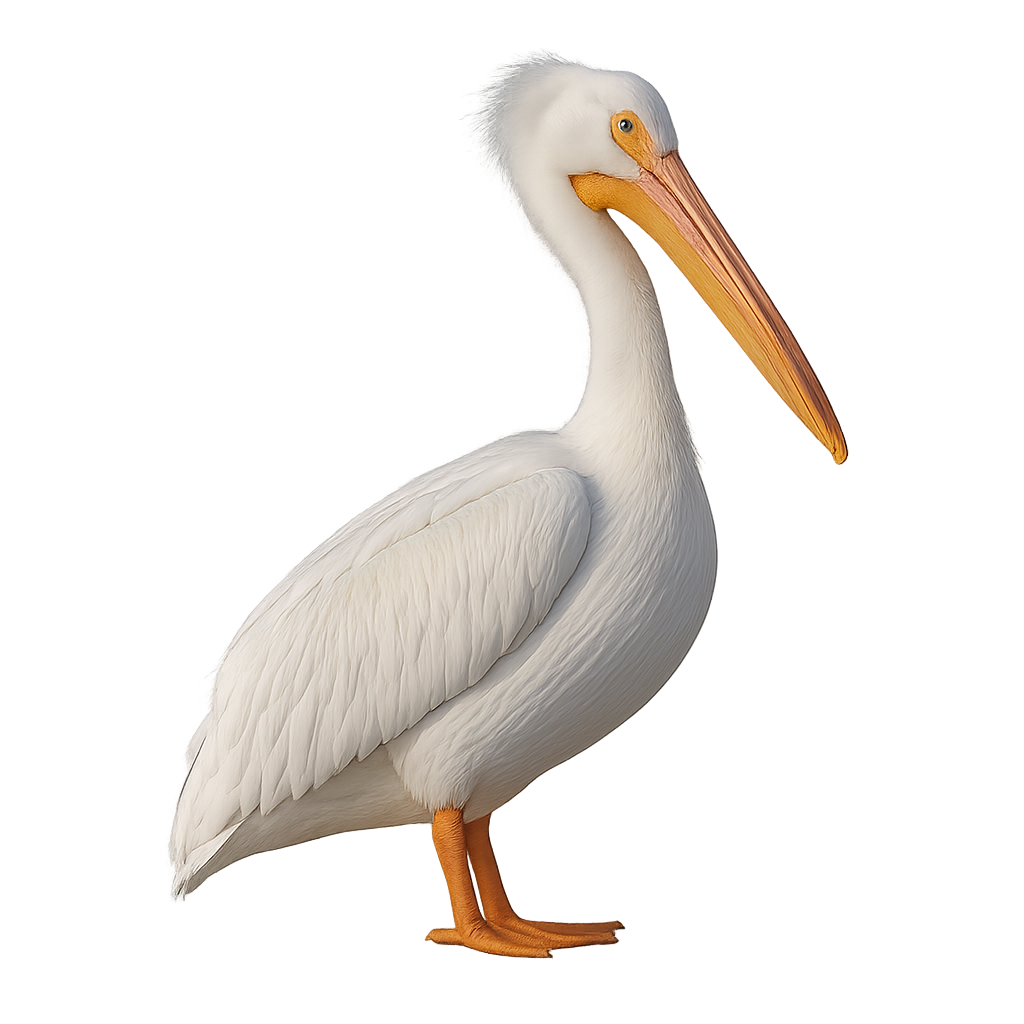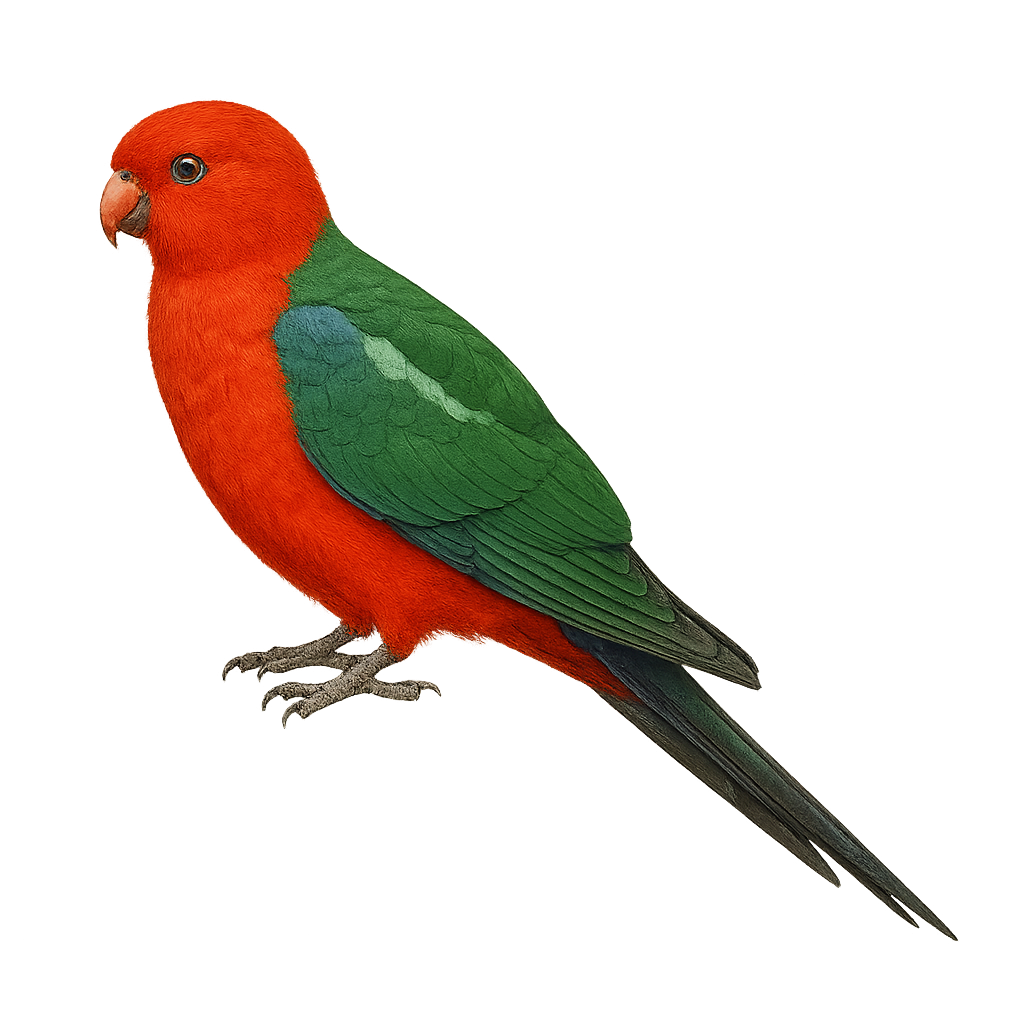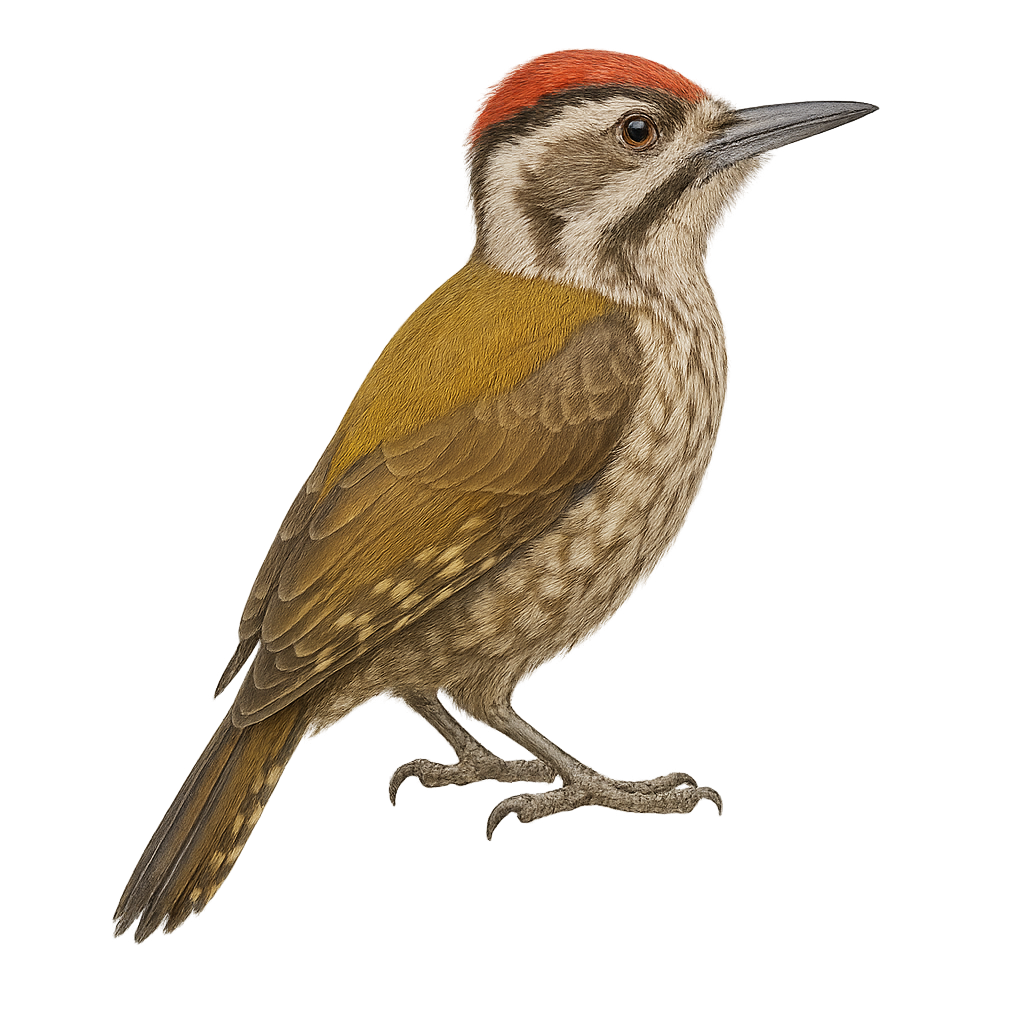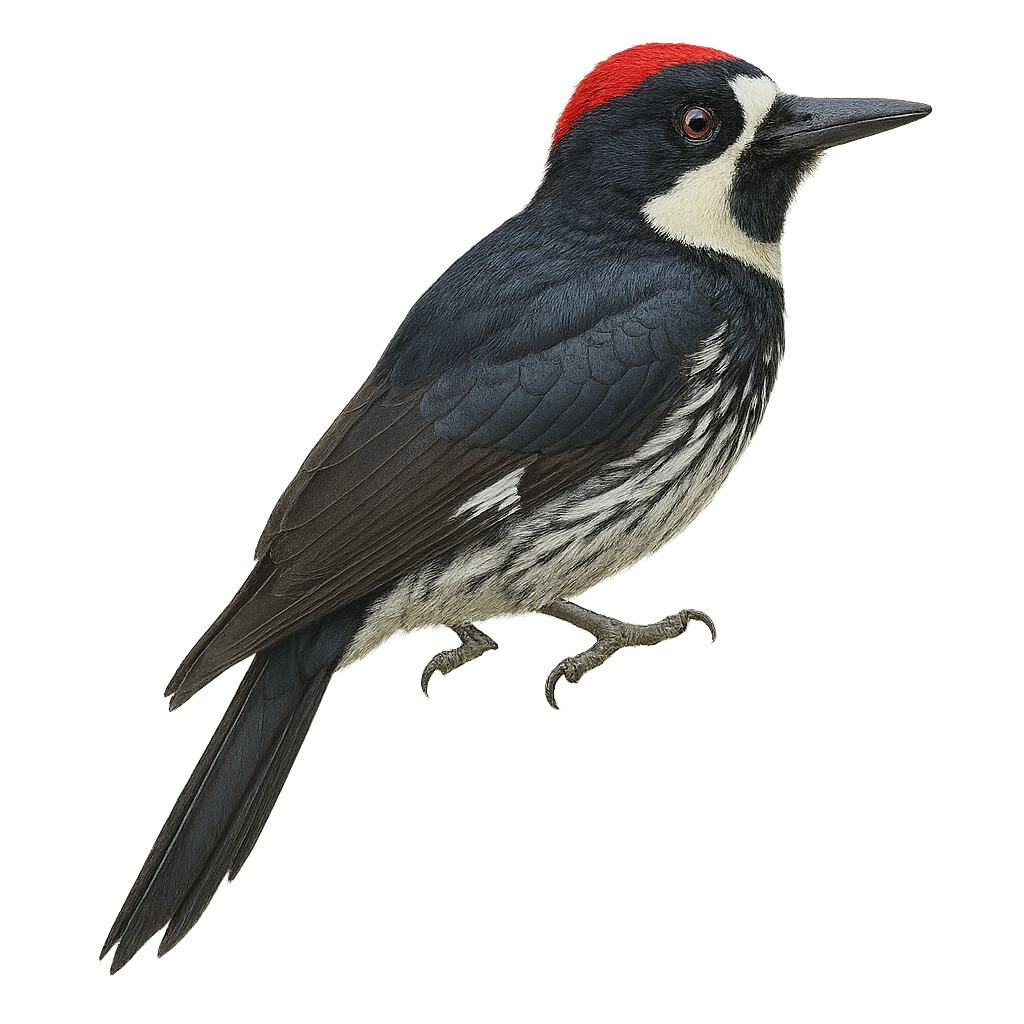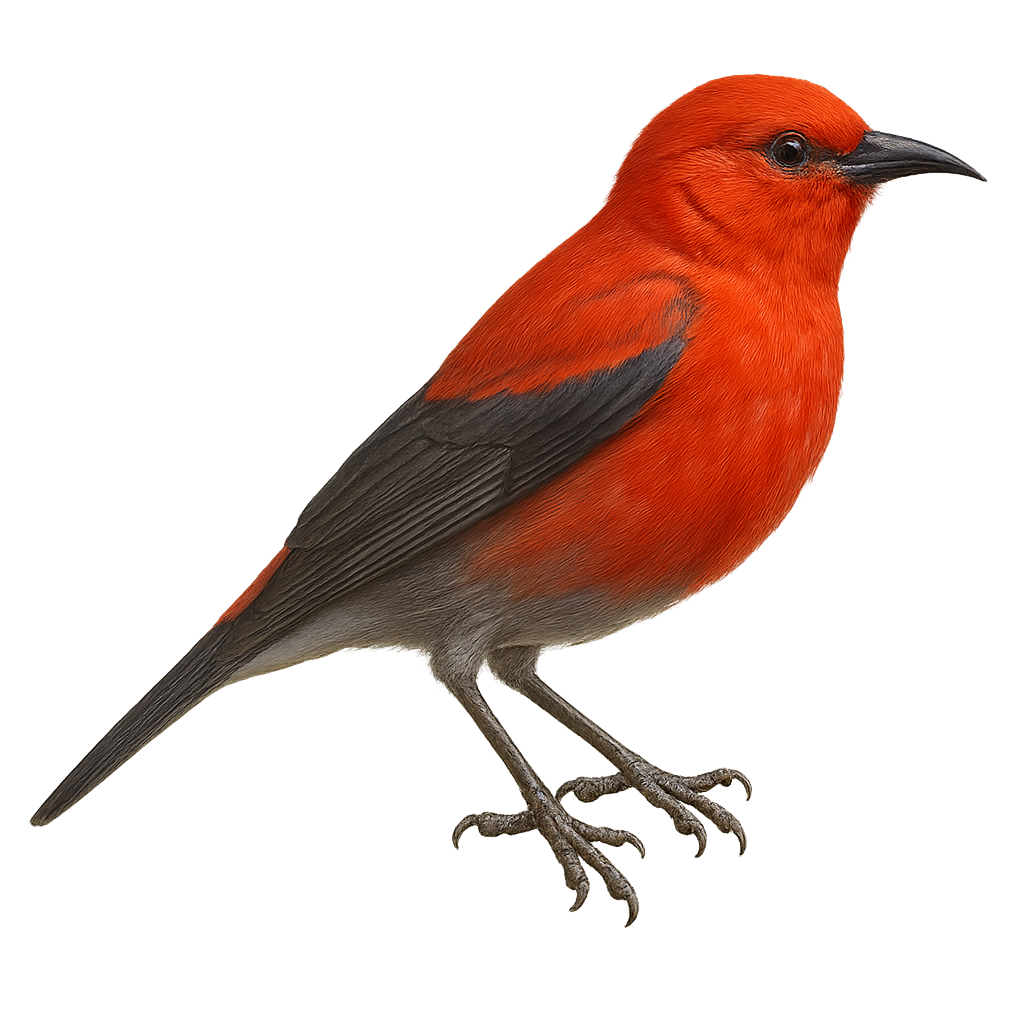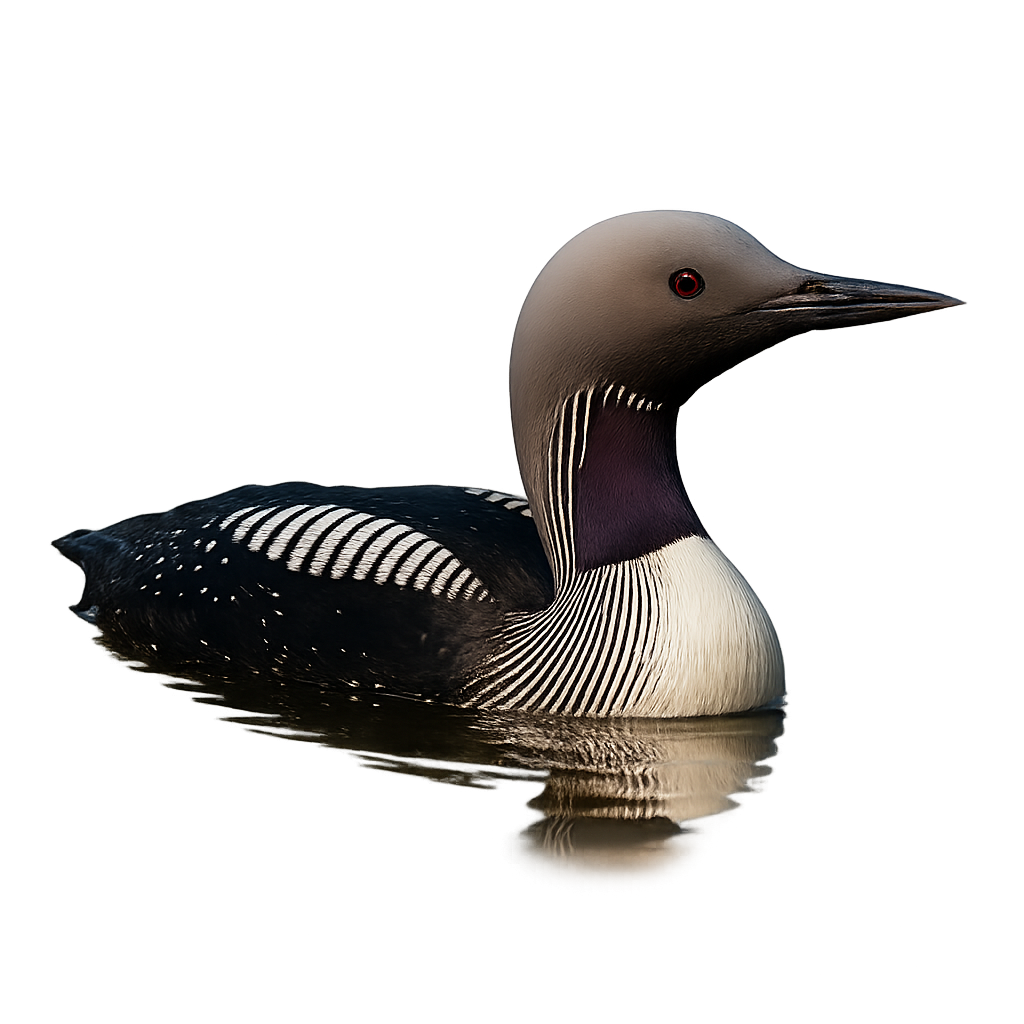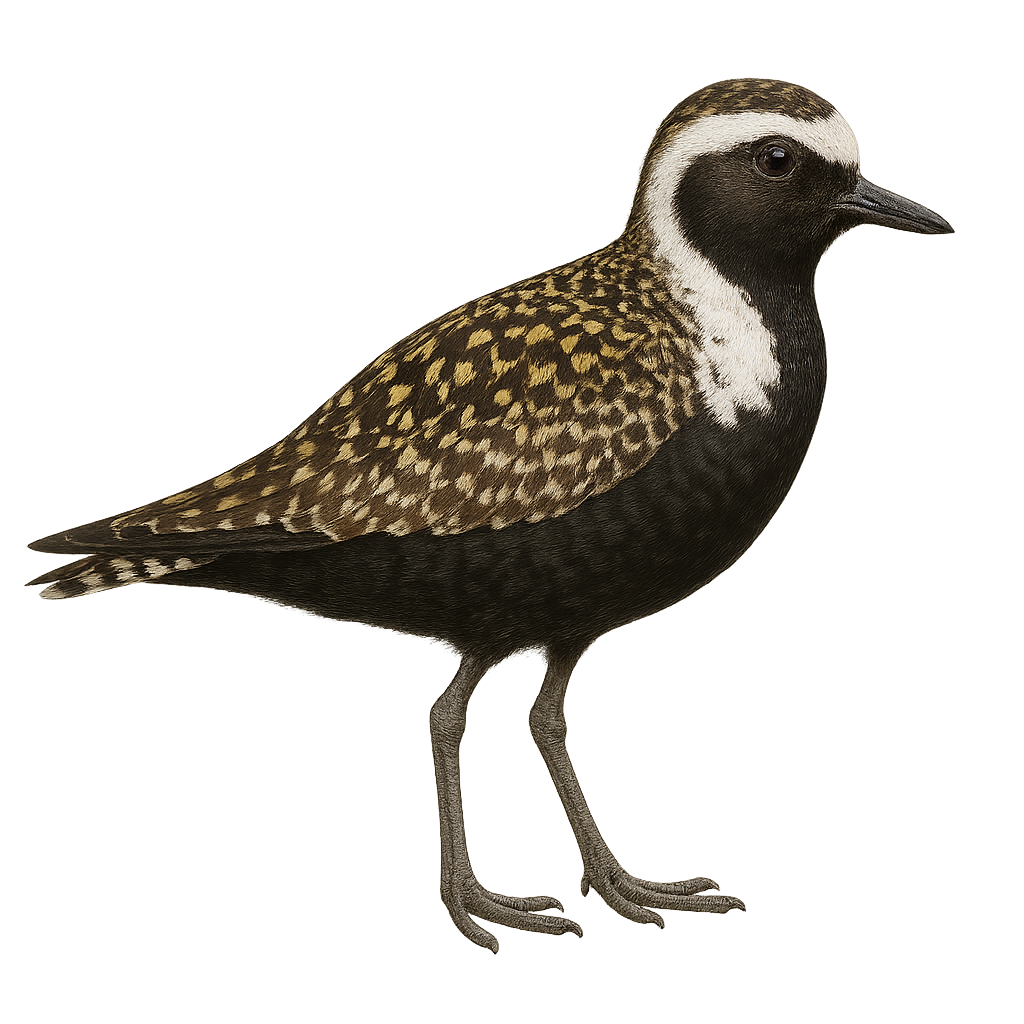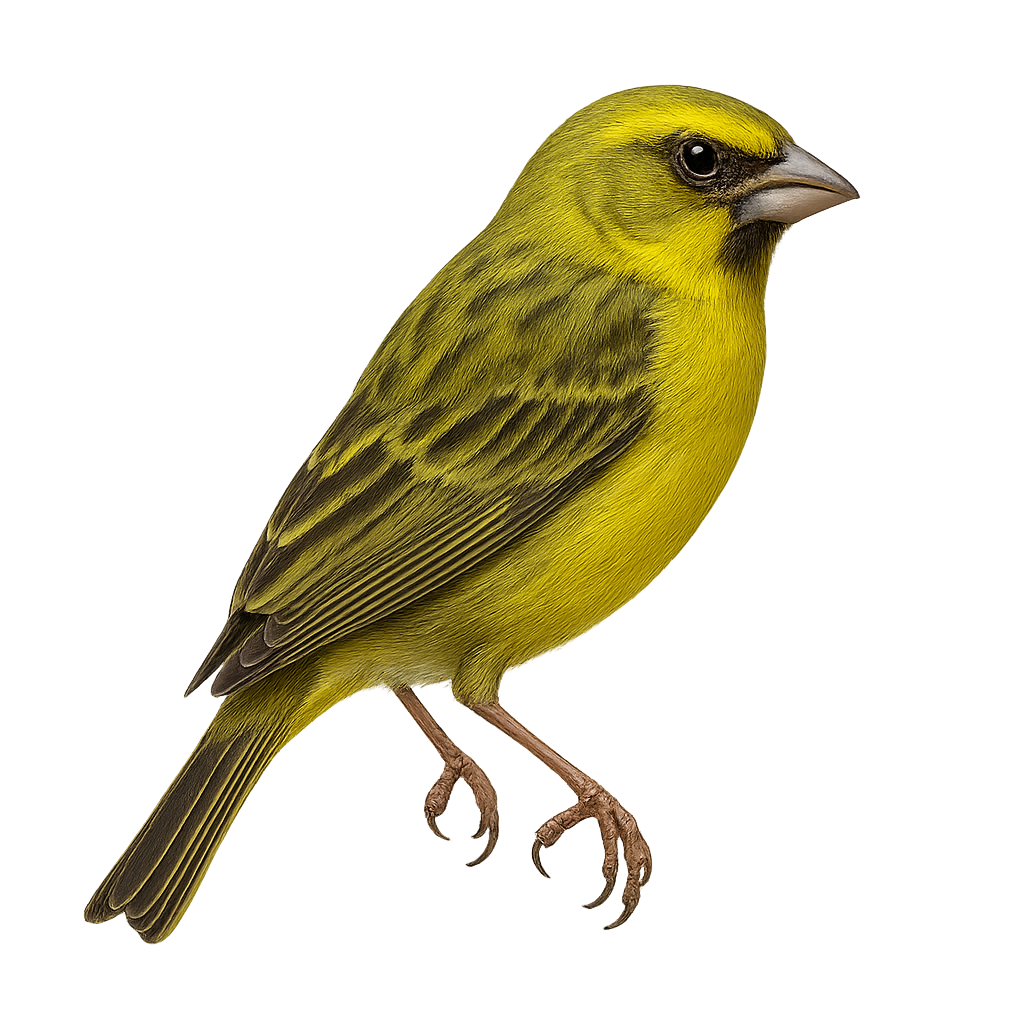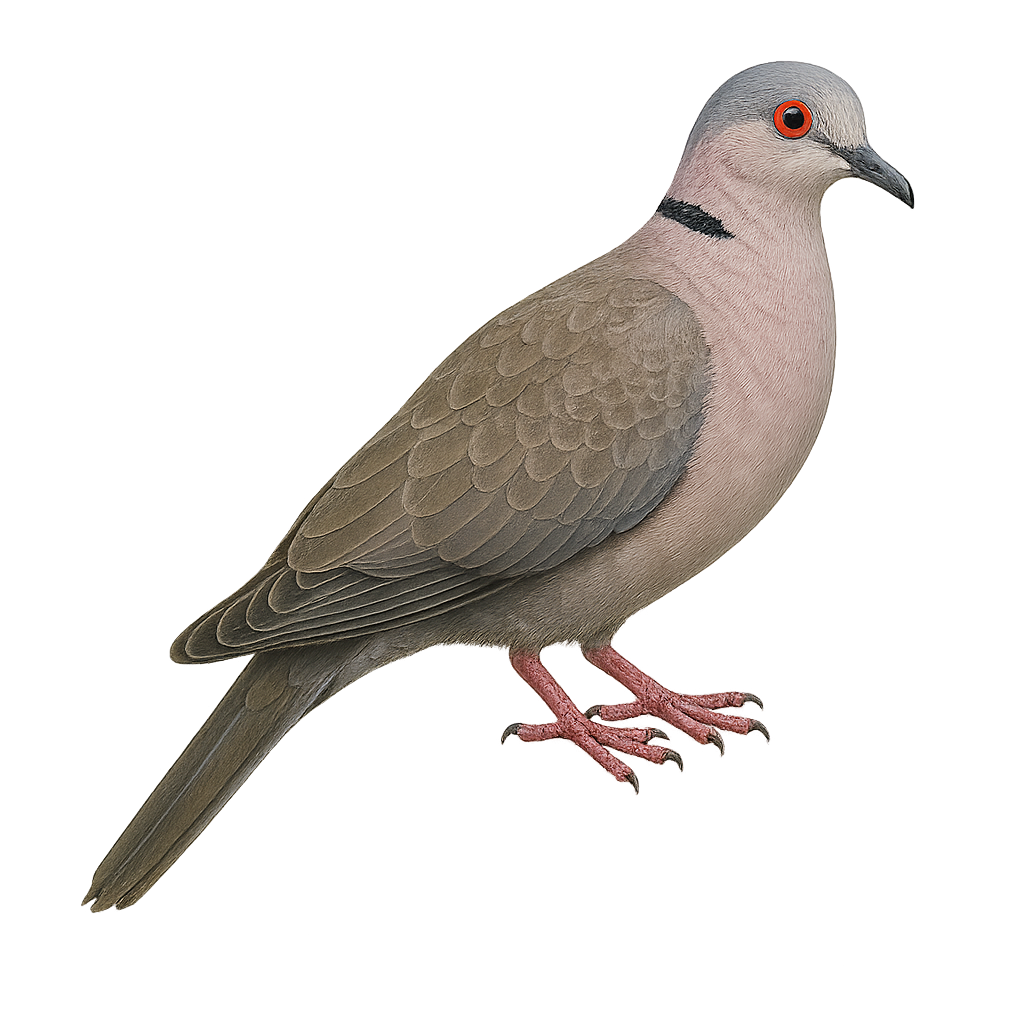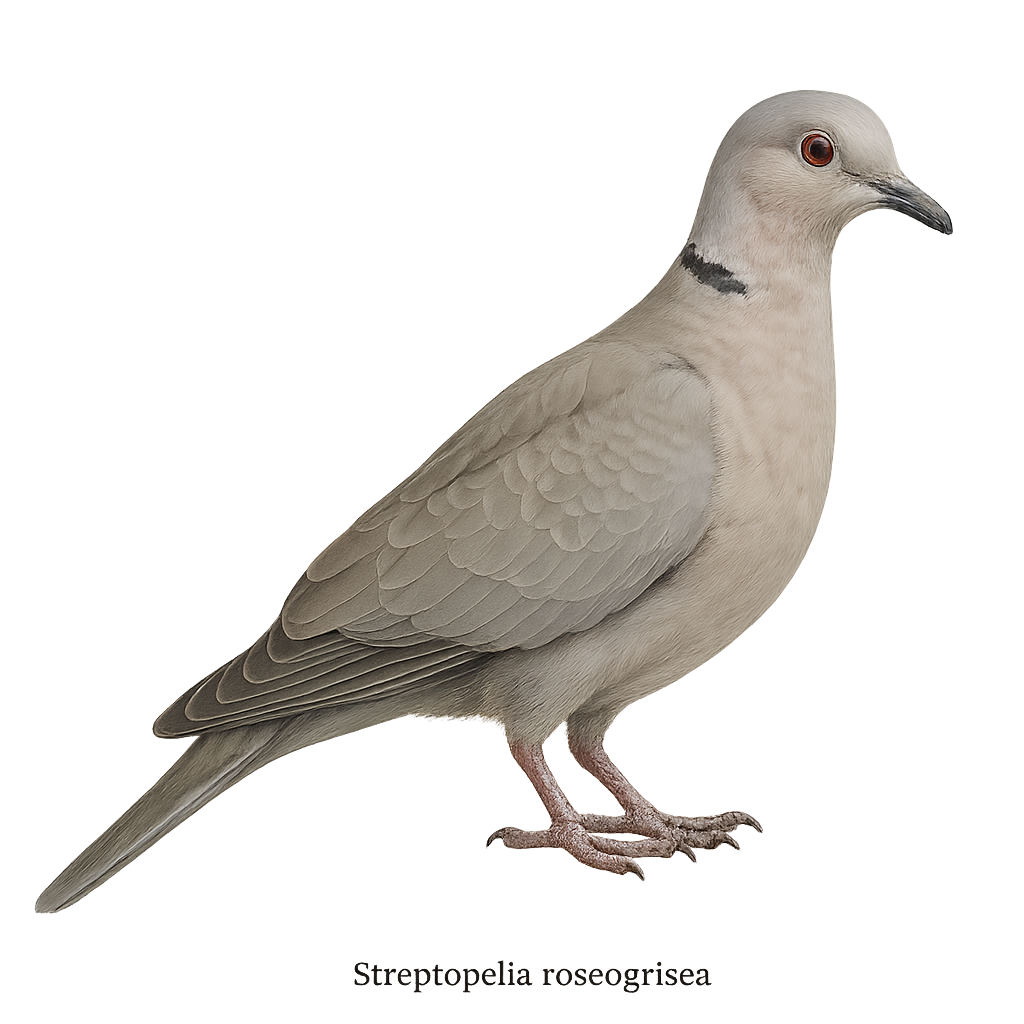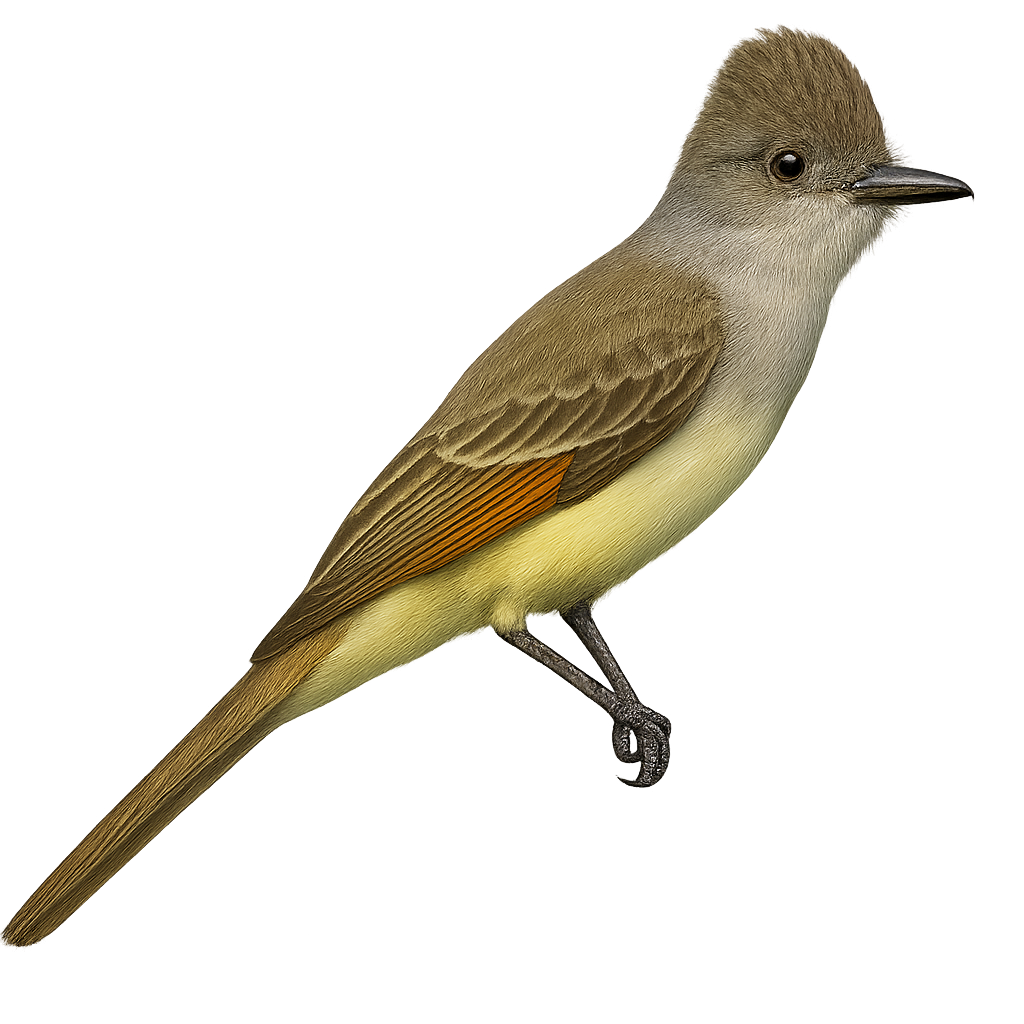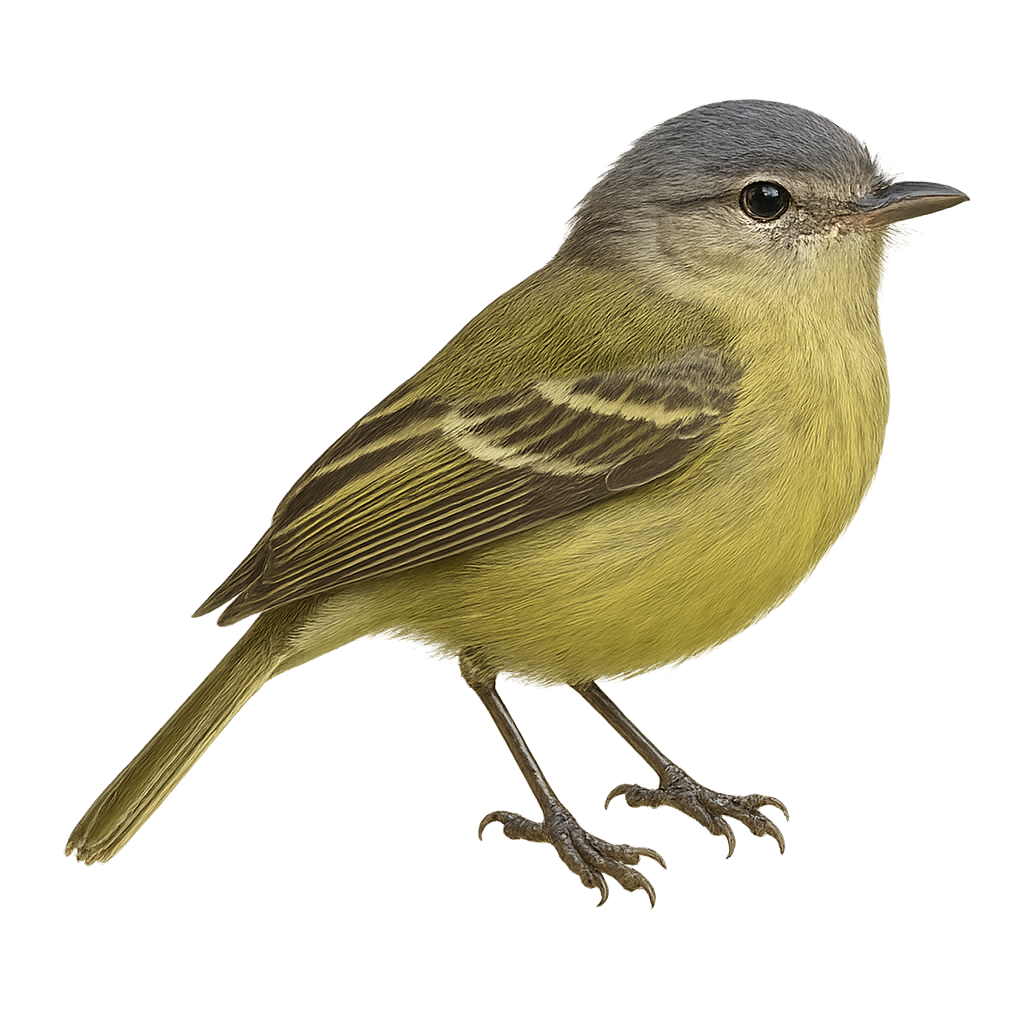The Azure Kingfisher, Ceyx azureus, is a small, brightly colored bird, predominantly vivid blue with orange hues on its belly. It primarily inhabits the waterways and rivers of Australia and New Guinea. This kingfisher is known for its speed and agility when diving to catch fish, its main food source. It nests in burrows dug into riverbanks. Though discreet, it is often spotted thanks to its sharp, distinctive call. Its compact size and striking plumage make it a favorite subject for birdwatchers and wildlife photographers.
The African Pygmy Kingfisher is a small bird, measuring about 12 cm in length. It is easily recognizable by its colorful plumage, with bright blue shades on its back and wings, and an orange hue on its belly and chest. Its beak is relatively long and pointed, adapted for catching small aquatic prey. This kingfisher primarily inhabits humid forests and wooded areas near water, where it feeds on small fish, insects, and crustaceans. Although often solitary, it can sometimes be seen in pairs, especially during the breeding season. Its discreet presence and rapid flight make it difficult to spot, but its high-pitched, piercing call can reveal its presence.
The Alpine Swift is a large swift measuring between 20 and 23 cm in length, with a wingspan of 51 to 58 cm. It has a white belly and throat, separated by a brown pectoral band, and a brown-gray back. It is often confused with the Common Swift, but it is larger and more robust. A migratory species, it winters in tropical Africa and returns to Europe between March and April. It primarily nests in inaccessible rock cavities but can also occupy urban sites. It feeds exclusively on insects captured in flight, often at high altitudes. It is monogamous, and pair bonds can last over ten years. In Switzerland, it is present from late March to late October. A protected species, it is considered potentially threatened due to the loss of its natural nesting sites.
The Asian Palm Swift, Cypsiurus balasiensis, is a small, elegant bird commonly found in the tropical regions of South and Southeast Asia. It is easily recognizable by its brownish-grey plumage and forked tail. This swift is particularly adapted to life in open areas, often near palm trees, where it builds its nest using plant materials glued with its saliva. It primarily feeds on insects caught in flight, showcasing remarkable agility. Its swift and graceful flight is a fascinating sight. Although often in motion, it can be seen resting on tree branches or power lines.
The American Robin, or Turdus migratorius, is a well-known bird in North America, easily identified by its bright orange-red belly and dark gray back. Measuring about 25 cm in length, it is often seen in gardens, parks, and forests. This bird is famous for its melodious song, especially noticeable in spring. The American Robin is a partial migrant, moving south in winter. It primarily feeds on earthworms, insects, and fruits. Its adaptability to various habitats and its not very shy behavior make it a favorite among birdwatchers.
The Ashy-headed Goose, or Chloephaga poliocephala, is a bird species belonging to the Anatidae family. It is primarily found in the southern regions of South America, particularly in Argentina and Chile. This bird is characterized by its ashy-gray head contrasting with its brown body and white wings. Males and females have similar plumage, although females are slightly smaller. The Ashy-headed Goose inhabits wet grasslands, marshes, and lake edges, where it feeds mainly on aquatic vegetation and grasses. It is often seen in pairs or small family groups. Although its conservation status is currently "least concern," it is sensitive to habitat degradation.
The Andean Goose, or Chloephaga melanoptera, is a striking bird of the Andes, known for its black wings contrasting with its white plumage. It inhabits mountainous regions of South America, mainly in Peru, Bolivia, Chile, and Argentina. This robust bird is well adapted to high altitudes, often seen near high-altitude lakes and marshes. Andean Geese are monogamous and form lifelong pairs. They primarily feed on aquatic vegetation and grasses. Their behavior is generally not very shy, allowing for easy observation. However, their remote and challenging habitat makes study more complex.
The Arabian Bustard, Ardeotis arabs, is a large terrestrial bird primarily inhabiting the arid and semi-arid regions of North Africa and the Arabian Peninsula. It is recognizable by its brown and white plumage, long neck, and sturdy legs. Males are generally larger than females and can reach an impressive wingspan. This bird prefers open plains and savannas where it feeds mainly on seeds, insects, and small vertebrates. Although capable of flight, the Arabian Bustard spends most of its time on the ground. It is known for its spectacular courtship displays where the male puffs up its feathers to attract the attention of females.
The Albertis's Bird-of-paradise, Drepanornis albertisi, is a captivating bird from the Paradisaeidae family, endemic to New Guinea. This medium-sized bird is recognizable by its striking plumage and long ornamental tail. Males display vibrant colors, with shades of green, blue, and yellow, while females have more subdued plumage. The Albertis's Bird-of-paradise primarily inhabits tropical rainforests and mountainous areas, feeding on fruits, insects, and small animals. Its courtship behavior is particularly spectacular, featuring complex dances and melodious vocalizations to attract females. Although its habitat is threatened by deforestation, the species is currently classified as of least concern by the IUCN.
The American Redstart, Setophaga ruticilla, is a small songbird belonging to the Parulidae family. It is easily identifiable by its striking black and orange plumage in males, while females display more subdued shades of gray and yellow. This migratory bird breeds in North America and migrates to Central and South America for the winter. The American Redstart primarily inhabits open forests, groves, and moist wooded areas. It feeds mainly on insects, which it catches in flight with its agile and rapid movements. Its melodious and varied song is often heard in spring and summer, marking its territory and attracting mates.
The Australian Pelican, or Pelecanus conspicillatus, is a large waterbird known for its striking white plumage, black wings, and enormous bill with an expandable pouch. Native to Australia, it frequents inland and coastal waters, primarily feeding on fish. Its impressive wingspan and majestic flight make it a fascinating sight. Although often seen in groups, it can also be solitary. Its ability to glide over long distances is remarkable, using warm air currents to conserve energy. The Australian Pelican is a symbol of Australian wildlife, admired for its beauty and natural elegance.
The American White Pelican, or Pelecanus erythrorhynchos, is a large aquatic bird known for its striking white plumage and bright orange bill. It is primarily found in North America, frequenting lakes, rivers, and wetlands. In flight, its black wings contrast with its white body, creating a majestic silhouette. This gregarious bird feeds mainly on fish, which it captures using its bill's expandable pouch. During the breeding season, it forms colonies on isolated islands. Although its conservation status is currently "least concern," it is sensitive to human disturbances and water pollution.
The Australian King Parrot, scientifically known as Alisterus scapularis, is a vibrant and captivating bird native to eastern Australia. Males are distinguished by their bright red heads, green backs, and wings adorned with red patches, while females have more subdued colors with green heads. These parrots measure about 42 cm in length and are often seen in pairs or small groups. They inhabit rainforests, woodlands, and urban gardens, feeding primarily on seeds, fruits, and flowers. Their song is melodious yet subtle, and they are known for their curious and sociable behavior towards humans.
The Abyssinian Woodpecker, or Dendropicos abyssinicus, is a fascinating bird primarily found in the mountainous forests of East Africa. This medium-sized woodpecker features distinctive plumage with olive-green hues and red markings on the head, more pronounced in males. It is often seen drumming on tree trunks in search of insects, its main food source. Although relatively discreet, its drumming resonates through the forests, signaling its presence. The Abyssinian Woodpecker plays a crucial role in the ecosystem by controlling harmful insect populations. Its ability to adapt to different forest types makes it a resilient bird, although deforestation may threaten its natural habitats.
The Acorn Woodpecker, Melanerpes formicivorus, is a fascinating bird from the Picidae family, easily recognizable by its distinctive black and white plumage and bright red cap. It is primarily found in oak forests of North and Central America, where it plays a crucial role in the ecosystem by dispersing oak seeds. This woodpecker is famous for its unique behavior of storing acorns, which it inserts into holes drilled in tree trunks, forming collective "granaries." Sociable, it often lives in family groups and communicates through a variety of calls. Although primarily insectivorous, it also feeds on fruits and nuts.
The Apapane, or Himatione sanguinea, is an endemic bird of Hawaii, belonging to the Fringillidae family. This medium-sized bird is recognizable by its bright red plumage, contrasting with its black wings and tail. Its curved beak is adapted for nectar consumption, its primary food source, although it also feeds on insects. The Apapane plays a crucial role in pollinating native flowers. It is often observed in high-altitude rainforests, moving in noisy flocks. Although its population is stable, it is threatened by habitat loss and avian diseases. The Apapane is a symbol of the unique biodiversity of the Hawaiian Islands.
The American Golden Plover, Pluvialis dominica, is a medium-sized migratory bird belonging to the Charadriidae family. It is characterized by its golden, speckled plumage, which provides excellent camouflage in its natural habitat. During the breeding season, the male displays a striking black breast contrasting with its golden back. This bird is renowned for its long migrations, traveling thousands of kilometers between its breeding grounds in North America and its wintering areas in South America. It primarily inhabits open grasslands, fields, and muddy shores. Its diet mainly consists of insects, worms, and small crustaceans.
The African Citril, or Crithagra citrinelloides, is a small songbird belonging to the Fringillidae family. It is characterized by its bright yellow plumage, especially vivid on the forehead and chest, contrasting with darker wings and tail. This passerine is mainly found in East Africa, where it inhabits woodlands, savannas, and gardens. Its melodious song is often heard at dawn and dusk. The African Citril is a sociable bird, often seen in small groups. It primarily feeds on seeds but can also consume insects. Its adaptability to various habitats makes it a resilient species, although some populations may be affected by deforestation.
The African Spoonbill, or Platalea alba, is a striking wading bird known for its spoon-shaped bill, which it uses to sift through water for food. It boasts a bright white plumage that contrasts with its reddish legs and bill. This bird is primarily found in the wetlands of sub-Saharan Africa, frequenting marshes, lakes, and rivers. The African Spoonbill is a gregarious bird, often seen in groups, and feeds mainly on small fish, crustaceans, and aquatic insects. Its breeding season varies by region but is generally tied to the rainy season when food resources are plentiful.
The Arctic Tern is a migratory bird species primarily found in coastal regions of the Arctic during the summer, and in tropical and subtropical areas during the winter. It measures about 35 to 40 cm in length, with a wingspan of 80 to 100 cm, and weighs between 90 and 130 g. Its plumage is mostly white with gray tones on the back and wings, and its head is black with a distinctive black band around the eyes. The Arctic Tern is famous for its impressive migrations, traveling thousands of kilometers between its breeding sites in the Arctic and its wintering grounds in Africa, Southeast Asia, and Australia. It primarily feeds on fish and marine invertebrates, which it catches by diving into the water. While its population remains stable, the Arctic Tern is threatened by habitat loss, human disturbances, and climate change.
The Asian Paradise Flycatcher, or Terpsiphone paradisi, is an elegant and fascinating bird known for its long tail feathers in males. It boasts a striking white plumage with a black head and distinctive crest. Females are more subdued with brownish hues. This bird is primarily insectivorous, feeding on flies, butterflies, and other small insects caught in flight. It is often found in tropical and subtropical forests, as well as gardens and parks. The Asian Paradise Flycatcher is a partial migrant, moving seasonally to find optimal living conditions.
The African Mourning Dove, scientifically known as Streptopelia decipiens, is an elegant and graceful bird primarily found in sub-Saharan Africa. It is distinguished by its delicate plumage, blending shades of gray, brown, and white, with a characteristic black band on its neck. This bird prefers open habitats such as savannas, agricultural areas, and urban gardens, where it can easily find seeds and small fruits to feed on. The African Mourning Dove is often seen in pairs or small groups, and its soft and melodious call is a familiar sound in its range. Although generally discreet, it can become more visible during the breeding season when it performs aerial courtship displays.
The African Collared Dove, or Streptopelia roseogrisea, is an elegant and graceful bird, often mistaken for the domestic dove. It features delicate plumage, primarily pinkish-grey, with darker shades on the wings and a distinctive black band around the neck. This bird is particularly appreciated for its soft and melodious song. Native to the arid regions of sub-Saharan Africa, it adapts well to semi-arid environments and savannas. It is often seen in pairs or small groups, feeding mainly on seeds and small insects. Although generally discreet, it can be spotted near water sources, especially at sunrise and sunset.
The Ash-throated Flycatcher, Myiarchus cinerascens, is a medium-sized bird, measuring about 18 to 21 cm in length. It is easily recognizable by its ash-colored throat and pale yellow belly. Its wings and tail are brownish with lighter edges. This passerine is primarily insectivorous but can also consume fruits and berries. It is found in arid and semi-arid areas, particularly in scrublands, open forests, and savannas. The Ash-throated Flycatcher is a partial migrant, breeding mainly in North America and migrating south for the winter. It is known for its distinctive song and varied calls, often heard during the breeding season.
The Ashy-headed Tyrannulet is a small passerine bird belonging to the Tyrannidae family. It is characterized by its ashy gray head contrasting with its olive-green body. This bird is mainly found in humid forests and forest edges, where it feeds on insects and small fruits. It is often identified by its distinctive and melodious song. Although discreet, it is relatively tolerant of human presence, making it easier to observe. Its geographical distribution mainly covers Central and South America, where it inhabits various altitudes. Its population is considered stable, although sometimes threatened by deforestation.
The Abyssinian White-eye is a small bird with olive-green plumage, distinguished by a distinctive white eye-ring. It measures about 10 to 12 cm in length and weighs between 6 and 10 grams. This bird is primarily insectivorous but also feeds on nectar and fruits. It inhabits various environments, including forests, savannas, and shrublands, often at altitudes between 600 and 3000 meters. The Abyssinian White-eye is a social bird, living in groups and communicating through melodious songs. It is widespread in East Africa, particularly in Ethiopia, Somalia, and Kenya. Although not threatened, it is sensitive to deforestation and habitat loss.


